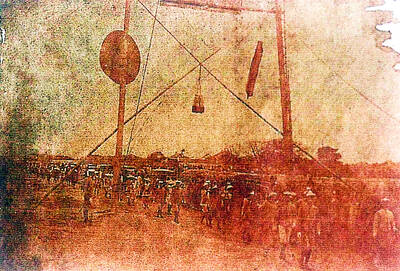Catwoman achieves something I would not have thought possible. It made me think back fondly on Garfield. But perhaps that has more to do with my own feline prejudices than with the relative merits of the movies. The two of them, arriving in the same season, present a stark choice. If you like your cats fat and lazy, with a fondness for lasagna and a penchant for sarcasm, Garfield is the movie for you. If you prefer them sleek and hissing, with whips and leather lingerie, then help yourself to Catwoman. Really, though, the choice is an even simpler one, between Bill Murray and Halle Berry.
Berry plays Patience Philips, a frazzled would-be artist who designs advertisements for a big cosmetics company run by the reptilian George Hedare (Lambert Wilson) and his icy wife, Laurel (Sharon Stone). In the course of a frantic day, Patience tries to rescue a mysterious cat that has been stalking her and is herself saved from falling from a high window by a kindly, studly cop named Tom Lone (Benjamin Bratt).

Later on, Patience overhears some deadly corporate secrets and is bumped off by the Hedares' goons, only to be revived by that enigmatic cat, who performs mouth-to-mouth resuscitation on Patience's waterlogged body and thus endows her with super-human feline powers. Patience soon starts behaving the way that most cats do: sleeping on high shelves, tiptoeing along the back of her sofa and eating tunafish straight out of the can.
You may wonder if she also licks herself clean or leaves dead mice on the welcome mat, but these are matters the film tactfully declines to explore. She does, however, steal a motorcycle, break into a jewelry store (where a robbery is already in progress) and cut her hair using two pairs of scissors at once. Her basketball skills improve enormously.
The explanation for all this, supplied by a zany cat lady, is that Patience has become a cat woman (which is not the same thing as a cat lady). According to the cat lady, cat women, servants of the Egyptian goddess Bast, date back to ancient times and reappear throughout history. "Cat women are not contained by the rules of society," the cat lady says. This is "both a blessing and a curse." "Accept it, child."
And why not? Directed by a Frenchman with the single, not uncatlike name of Pitof, Catwoman is a howlingly silly, moderately diverting exercise in high, pointless style. Pitof's approach to storytelling is casual; he yawns and stretches over the script, which is a pedestrian piece of committee work in any case.
But the picture, full of moody, oversaturated colors, twisty camera moves and stroboscopic editing, does have a certain decadent visual flair and a louche, sneering sense of humor. Watching it is like paging through a fat European fashion magazine at high speed in the lobby of a hotel. Through the haze of moody color, you can occasionally glimpse the flicker of an idea about female sexuality or the manufacture of beauty, but these themes are ornamental flourishes in the pretty, kinetic emptiness.
Bratt and Berry are nice to look at, though the sloppy, hyperactive computer-generated effects may cause some eyestrain. T
Their romantic scenes together are fairly dull, at least when Patience is being her everyday human self. When she puts on her mask and leather suit (accessorized with diamond-studded claws and a long, snaking whip), it's a whole different scene, and the two of them enact a teasing S-and-M ballet on a backstage catwalk.
The character of Catwoman, definitively embodied by Eartha Kitt in the old Batman television series and dutifully updated by Michelle Pfeiffer in Tim Burton's Batman Returns, has always been a camp dominatrix, a persona not entirely suited to Berry's soft, eager demeanor. She overacts Patience's flaky timidity and then, to compensate, overdoes catwoman's suave self-confidence, swinging her hips and pushing out her lips as if she were trying to attract the amorous attentions of Pepe le Pew.
The feline attribute she most lacks is the one the movie is most desperate to manufacture, which is elegant, graceful cool. Stone compensates somewhat for this deficit, and the climactic battle between Laurel and Patience is sure to thrill anyone who likes to see a good -- forgive me -- cat fight.
Like Garfield, Catwoman is really a parody of catitude, offering glib mockery of a domestic species notorious for its pride and hauteur. It exhibits nothing like the sympathy that Spider-Man brings to the melancholy arachnid soul, or the insight that Shrek 2 offers into donkey neurosis. But the cats of the world will get over this insult. Most likely by sleeping through it.

June 23 to June 29 After capturing the walled city of Hsinchu on June 22, 1895, the Japanese hoped to quickly push south and seize control of Taiwan’s entire west coast — but their advance was stalled for more than a month. Not only did local Hakka fighters continue to cause them headaches, resistance forces even attempted to retake the city three times. “We had planned to occupy Anping (Tainan) and Takao (Kaohsiung) as soon as possible, but ever since we took Hsinchu, nearby bandits proclaiming to be ‘righteous people’ (義民) have been destroying train tracks and electrical cables, and gathering in villages

Dr. Y. Tony Yang, Associate Dean of Health Policy and Population Science at George Washington University, argued last week in a piece for the Taipei Times about former president Ma Ying-jeou (馬英九) leading a student delegation to the People’s Republic of China (PRC) that, “The real question is not whether Ma’s visit helps or hurts Taiwan — it is why Taiwan lacks a sophisticated, multi-track approach to one of the most complex geopolitical relationships in the world” (“Ma’s Visit, DPP’s Blind Spot,” June 18, page 8). Yang contends that the Democratic Progressive Party (DPP) has a blind spot: “By treating any

Swooping low over the banks of a Nile River tributary, an aid flight run by retired American military officers released a stream of food-stuffed sacks over a town emptied by fighting in South Sudan, a country wracked by conflict. Last week’s air drop was the latest in a controversial development — private contracting firms led by former US intelligence officers and military veterans delivering aid to some of the world’s deadliest conflict zones, in operations organized with governments that are combatants in the conflicts. The moves are roiling the global aid community, which warns of a more militarized, politicized and profit-seeking trend

This year will go down in the history books. Taiwan faces enormous turmoil and uncertainty in the coming months. Which political parties are in a good position to handle big changes? All of the main parties are beset with challenges. Taking stock, this column examined the Taiwan People’s Party (TPP) (“Huang Kuo-chang’s choking the life out of the TPP,” May 28, page 12), the Democratic Progressive Party (DPP) (“Challenges amid choppy waters for the DPP,” June 14, page 12) and the Chinese Nationalist Party (KMT) (“KMT struggles to seize opportunities as ‘interesting times’ loom,” June 20, page 11). Times like these can